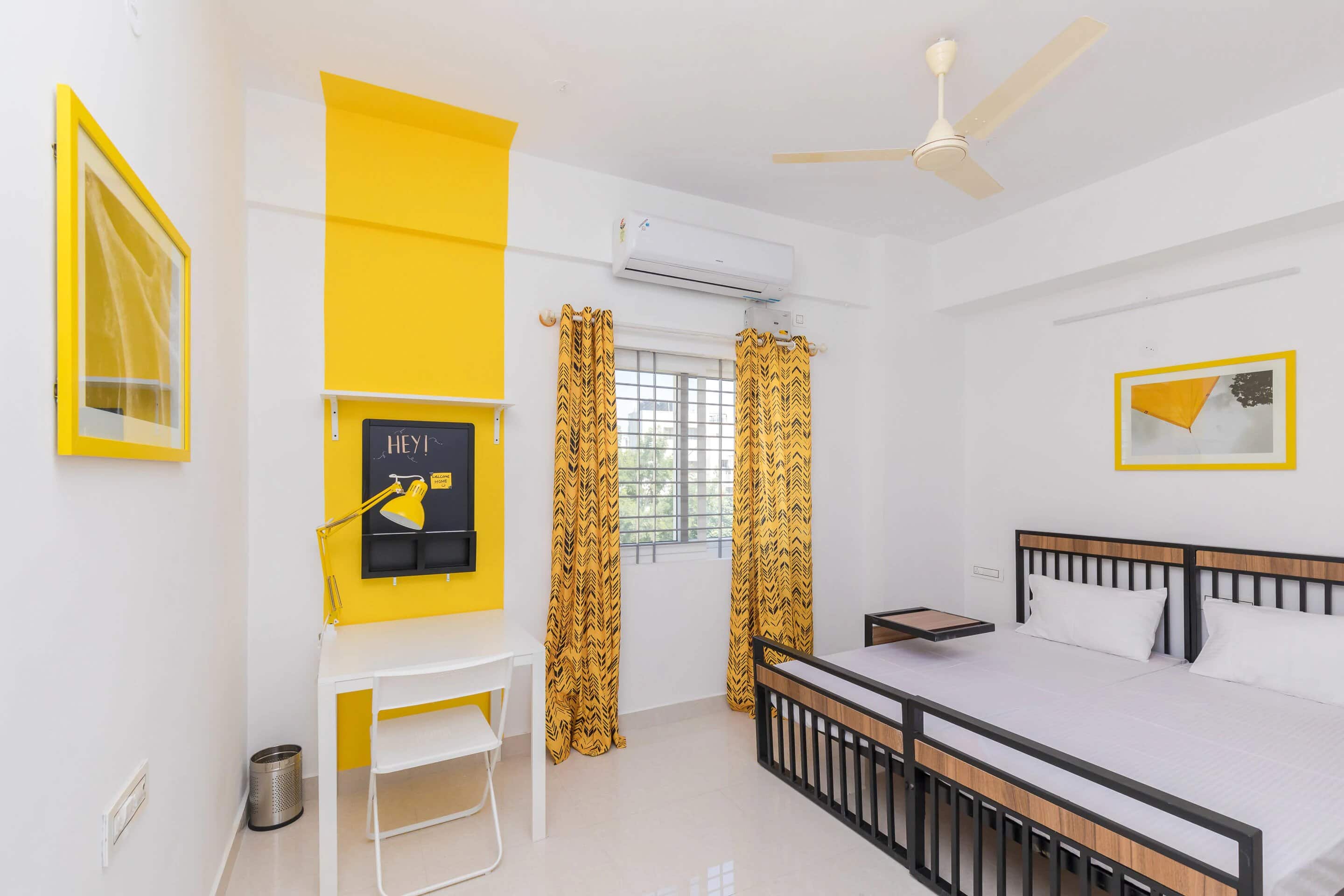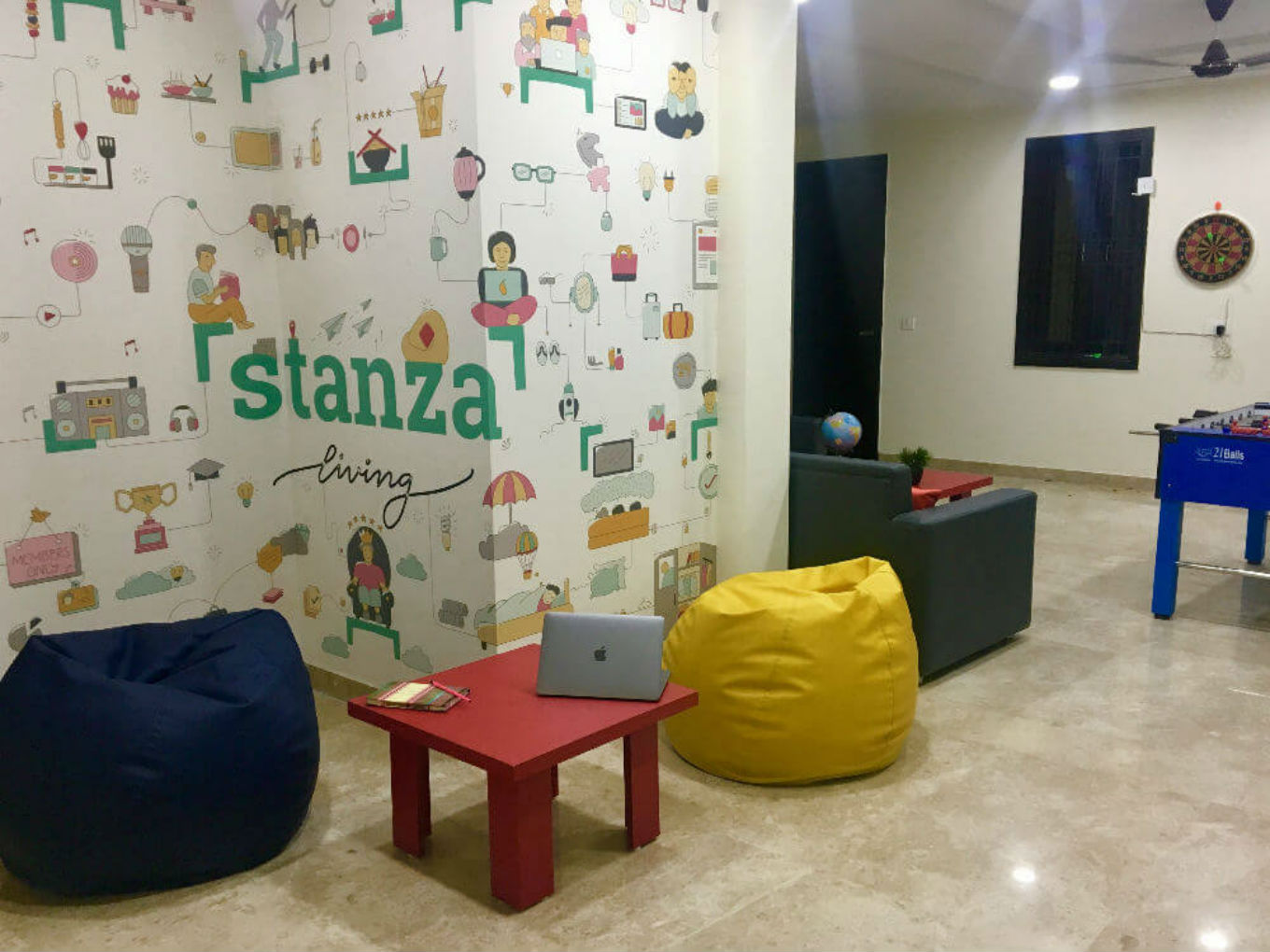SUMMARY
The Indian coliving market is expected to increase at a strong CAGR of 17% in the next five years
Indian millennials account for a 47% share in the country’s working-age population, the target group for coliving spaces
The likes of SimplyGuest, OYO, Nestaway and Zolostays have made a deep impact on the rental market with their coliving models
With the Indian residential real estate sector stuck in a vicious loop of increasing prices and lack of demand for home buying, there is a massive stock of unsold inventory. So the question is if no one is buying homes, then where are new Indian families setting up homes?
The age-old debate of rent vs buy still persists but with the digital economy increasing the appetite for bite-sized spending and driving up the need for value addition, the largely millennial workforce in urban areas and metros has turned to options beyond traditional renting or owning, which is a far-fetched notion for many young workers. For homeowners, the low rental yields have pushed the need for new models higher than ever, especially as many homeowners are bearing EMI payments for years.
That new model has come in the form of coliving. Short for community living, coliving has become a rage among the rising young workforce for tech companies and startups in metros. The rising demand comes on the back of the need to solve issues with the traditional rental model — inconsistent rents, high brokerage, nosy landlords and rule imposition.
As per a combined report by Jones Lang LaSalle (JLL) and the Federation of Indian Chambers of Commerce & Industry (FICCI) the Indian coliving market is expected to increase at a strong CAGR of 17% in the next five years where Delhi NCR will constitute nearly 40% of the potential market opportunity by 2023, followed by Mumbai at 25%. It added that realised demand in the top seven cities stood at about 94K beds in 2018.
Startups Vying For Coliving Market Share In India
Prominent players in the coliving market space of India include names such as OYO LIFE, Zolo, Stanza, Hello World backed by Nestaway, Colive and SimplyGuest among others. Currently, the coliving sector in India is pegged at around $120 Mn. It is set to touch $2 Bn by 2022 as it gets more formalised, according to RedSeer Consulting. The sector has recently been garnering attention from investors.
This can be understood from various investments this year:
- In March 2019, Coliving Space Creator StayAbode Received Add-On Funding
- In April 2019, Coliving Startup Housr Got Backing From Abhishek Lodha, Pirojsha Godrej
- In April 2019, Coliving Startup Colive Raised $9.2 Mn From Salarpuria Sattva
- In June 2019, Coliving Startup Isthara Earned Fresh Funding
- In August 2019, Real Estate Developer Puravankara Entered The Coliving Market
- In September 2019, Nestaway Invested $10 Mn In Co-Living Entity Hello World
- In November 2019, ZoloStays In Talks To Raise $100 Mn Series C Round
So what’s really getting startups in India to embrace the coliving model and why are consumers rushing to give them the business?
Subbu Athikunte, founder of Bengaluru-based SimplyGuest, believes the concept of coliving has existed in India for many decades under different names, most notably as paying guest. In his opinion, it’s not really unfamiliar to Indians.
“When people moved to different cities for higher education, and if they didn’t want to stay in the hostel, they ended up taking a room in a known family around the college for a monthly fee. It was an unorganized sector. The term coliving became a marketing buzzword only in the last few years as capital started flowing into it” Athikunte told Inc42.
Hospitality startup OYO entered the segment last year with OYO Life, which operates fully-furnished rental housing arm of OYO. Rohit Kapoor, who is CEO at OYO for new real estate businesses told us that while coliving has always existed in India in myriad forms, it is only recently that this concept has emerged as a new business model for tech startups.
The OYO exec said that India is a $50 Bn housing market which includes 15 Mn migrant students and 40 Mn migrant professionals. This untapped demand of 60 Mn beds thereby creates a huge opportunity for companies and startups operating in this space. Its biggest advantage is the fact that coliving allows millennials to live in new, furnished spaces with a range of amenities at an affordable cost.
Who Is The Coliving Target Audience?
A research titled, “Coliving, rent a lifestyle” by KnightFrank states that Indian millennials account for a 47% share in the country’s working-age population. However, not only the young workforce but students enrolled in higher education on the lookout for hassle-free rental accommodation in urban education centers where they migrate to for under-graduation, post-graduation and doctorate studies.
SimplyGuest’s Athikunte says that uncertainty and fluctuations in job prospects are some of the reasons for the growth of coliving startups in India. He adds that as careers have become more dynamic and people aren’t sure how long they want to remain in a job. They don’t want their residence holding them back if there is a better opportunity that requires them to change their homes.
As the median age for marriage in India climbs up for both men and women, the need for more options for rental housing for singles living away from home is increasing. OYO’s Kapoor states its services are targeted at millennials and young professionals in search of fully-furnished, managed homes on long-term rentals. The affordable price point is another advantage for coliving startups over rentals. But that also means coliving startups have to identify the right locations that are convenient for the target audience.

For students pursuing higher education, fresh graduates, single women, bachelors, and double-income-no-kids (DINK) couples, homes are transitory assets that can be upgraded as they move on in life. That’s what has made coliving startups in India so optimistic about the prospects of the market.
Suresh Rangarajan, founder, and CEO of Colive, a coliving startup which has operations in Bengaluru and Chennai told Inc42, “In a market such as coliving, demand is always prevalent under various segments. It is just about understanding the consumer mindset and getting him on board.”
The startup has a strong customer base from the student and DINK market segments and plans to foray into shared living for senior citizens in the near future with coliving properties across India.
Athikunte said customers should be able to rent just about any kind of space: houses, garages, storage spaces, bungalows, stadiums, parking spaces, etc via SimplyGuest. He also envisions tenants availing additional services through the platform.
Attracting millennials is no easy task with so many competing digital services. Since most coliving spaces in India target the millenials, a major chunk of marketing the brand is done through digital media.
Anindya Dutta, MD, and cofounder of coliving startup Stanza Living, which provides student accommodation across 10 cities in India told Inc42, “We work with a combination of offline and online channels to reach out to our target audience through diverse platforms they interact with. Word-of-mouth has been a strong channel for us, especially as we have continued to maintain an average 80% retention at our residences over the last two years.”
Colive’s Rangarajan agrees about word of mouth marketing is the best way to reach the target audience.
Another factor contributing majorly to the success of coliving ventures is the fact that people who have moved away from their homes into big cities, feel lonely and look for a sense of community and belonging. While some coliving companies actively organise social gatherings within housemates, others believe that when like-minded individuals come together and live in a comfortable setting it automatically helps them connect with each other.
OYO LIFE’s Kapoor believes that the major advantage of coliving spaces, as opposed to PGs /serviced apartment, is that it significantly cuts down the cost of living because not only do people share the rent but also enjoy add on services such as daily housekeeping, laundry/ on-call resident facility management; curated meals, etc.,
Rangarajan said that the safety factor is a key element attracting consumers. He told us, “The availability of 24×7 security systems with entry and exits allowed only through facial recognition, not only makes coliving safer but a better option from PGs and rental accommodation. No landlord interference is another major advantage that attracts the youth.”
Coliving Startups In India Still Exploring Business Models
A coliving business operates on the fundamental where the company acts as a go-between for the property owners and prospective tenants, with the aim of reducing hassles for both parties along with providing and maintaining the property for the tenant.
SimplyGuest currently operates in more than 80 properties across 15 localities in Bengaluru with a current occupancy rate of 95%. Founder Athikunte told Inc42, “We take 10-15% of the rent as our charges from the owner for providing them with sales, marketing, tenants, payment collection and vendor services.”
Colive, which operates in Bengaluru and Chennai and has plans to start operations in Pune, began with 1000 beds in 2016 and now stands at 20K beds in 2019. Rangarajan also admits to dynamic and flexible agreements with owners for different properties.
“Sometimes we do a 75:25 profit sharing, other times we work out a plan which suits both – the owner and us. It all depends on the feasibility.”
In a bid to standardise homes in a certain locality and retain the same feature set across properties, Colive also handles furnishing and interior decor for each of its homes.
OYO LIFE which is currently witnessing about 85-90% occupancy with 95% of the residents renewing their stay, according to Kapoor’s claims, said it leases the entire apartment building, or row of houses and gives fixed monthly payments to owners. The company states that OYO LIFE property owners earn 10-15% more than what the market offers. They added that the company works with large developers and independent asset owners to take over an entire building, tower or an independent house. It further added that OYO LIFE is not an aggregator and takes responsibility for end to end management of spaces, lease entire buildings, furnish, clean, transform and maintain them.
Where’s The Tech In Coliving Startups?
While coliving platforms might seem like real estate players, to reach the right customers through their website or mobile applications, there’s a lot of reliance on technology. Apps aim to provide answers to typical consumer queries, and acts as a dashboard for tenants, with clear visibility on electricity and utility bills, rental agreement, furniture and fitments that are part of the house and other amenities in one place.
Athikunte said that the app helps sort out flatmate issues, which are the most common among young users. However, the company plans to minimise the friction as much as possible with measures such as showing tenants other data such as internet speeds and data consumption among flatmates, as well as other facilities such as providing additional furniture.
For young tenants such as new workers and students, some of the big problems are the moral policing that comes from housing societies and older homeowners, the contracts and accounting involved, the safety challenges and the quality of house help. Athikunte added that the regulatory framework and lack of support in the form of enforcement is an immediate challenge for startups. “We hope it will get better as governments start to understand changes in market behaviour,” he added.
Colive’s Rangarajan said that coliving is a relatively new concept in India for the core target audience — it blends real estate, technology, and hospitality. The government needs to come up with governing guidelines for this sector. He further added that the sector needs increased investments from foreign financial investors to achieve maximum growth.
Coliving Challenges: Organising And Standardising Scattered Rental Market
Dutta of Stanza Living said that one of the biggest challenges for the startup initially was educating landowners about the potential of organising the highly competitive student housing industry, which for years has been dominated by unorganised and fragmented low-quality operators.
“We spent a significant amount of time since our launch in 2017, educating property owners about our value proposition which will lead to rental yield upliftment for them, apart from removing the hassle of property operation and maintenance from their responsibility,” – Anindya Dutta

Finding the correct properties which are near to the workplaces in metro cities is a major challenge, said OYO LIFE’s Kapoor. He added that working with traditional real estate players, builders and local municipal and city administrations is also a challenge for coliving startups.
While the market has witnessed rapid strides in the last two years, realised demand continues to be minuscule, given the size of the overall opportunity. This can be gauged from the fact that the currently realised demand accounts for merely 2.6% of the overall shared rental accommodation opportunity.
Looking at the scope of the industry, the number of players in the coliving space in India is growing at a fast clip and expanding to Tier 2 and Tier 3 cities as well. With an increase in the influx of competitors backed by VCs, the pressure to stand out and offer something different to the customer and gain competitive advantage is high. Startups such as Delhi-based CoHo lets tenants choose weekday meal plans if they prefer eating out on the weekends.
StayAbode is developing one of the biggest coliving projects in India with space for 1,400 people living in a community environment in Whitefield, Bengaluru. The area is home to a number of multinational firms including tech’s Big Five — Facebook, Amazon, Apple, Microsoft, and Google — and a working population of over 50K millennials. The startup’s ambitious project is slated to go live in September 2020.
WeLive, a coliving concept owned and operated by WeWork, is set to debut in India in 2019. The SoftBank-backed company is currently piloting the project in the US and is in talks with its Indian partner, Embassy Group to launch it in the country to tap the growing numbers of millennials.
The report further states that the existing capacity of organised players stands at nearly 108K beds across the top seven cities. Further, most of these capacities operate at more than 85-90% on the back of strong demand and limited supply in these cities. Going ahead, the supply of beds by organised coliving startups in India is expected to increase by over 5x to about 541K beds by 2023. Delhi NCR and Bengaluru will account for more than 50% of the cumulative capacity. In response to this strong expansion in supply, demand will grow in tandem to about 470,000 beds.
With new entrants and more competitive market space, the coliving sector in India is bringing a radical approach to how young India views real estate and homes. OYO’s Kapoor added, “We expect the coliving market to continue to grow further and are geared to provide over 100K beds by 2019-end.”



























